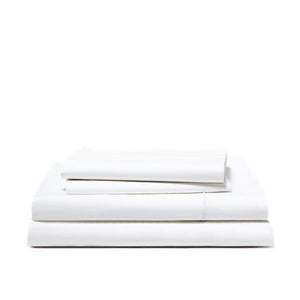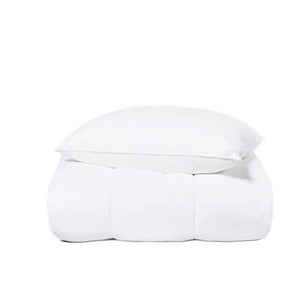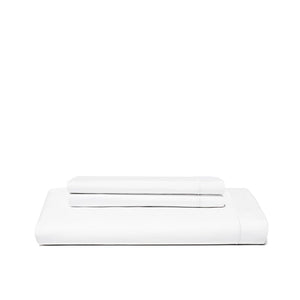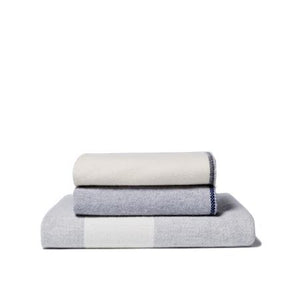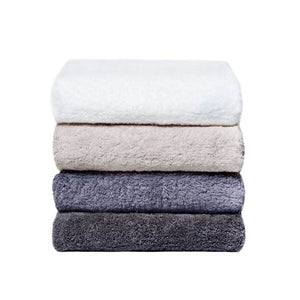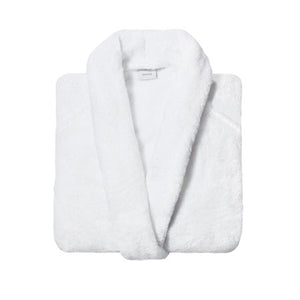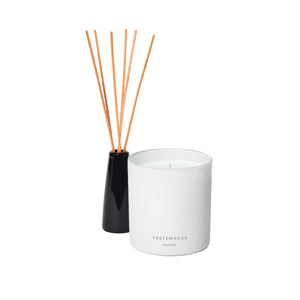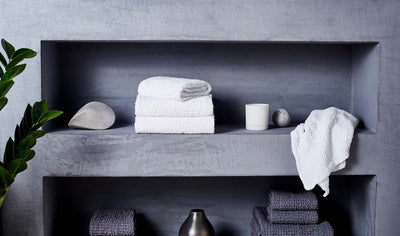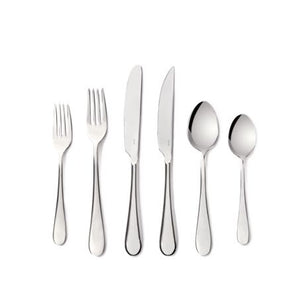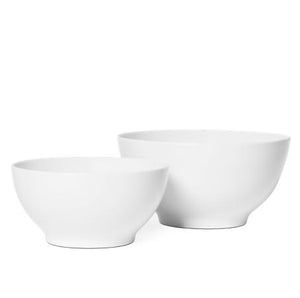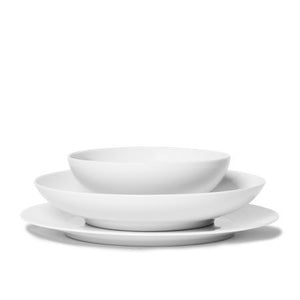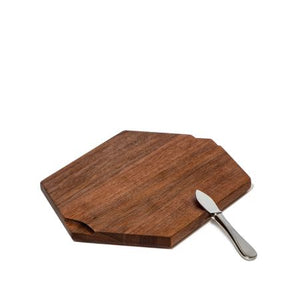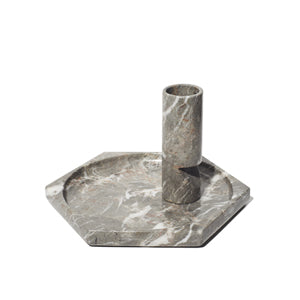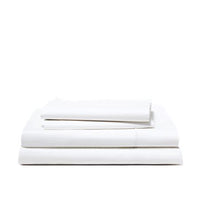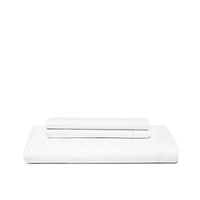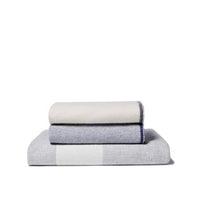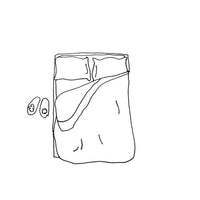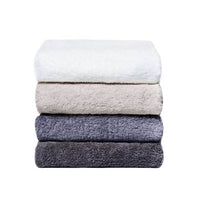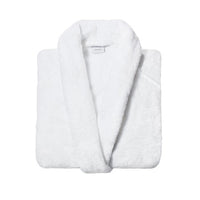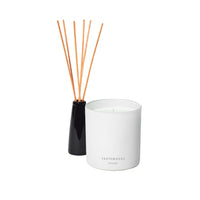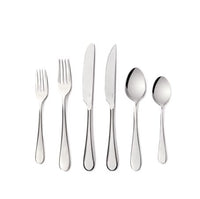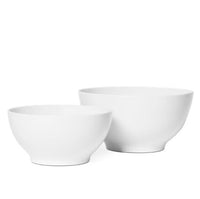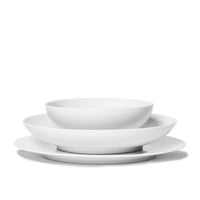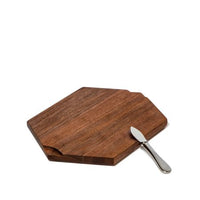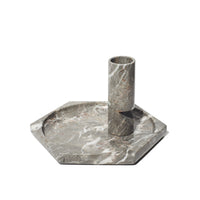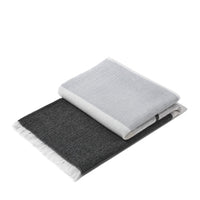Choosing the right modern utensils for your table is essential. Whether hosting a fancy dinner party or enjoying a casual meal with family, the right utensils can make all the difference. Flatware vs. silverware are the two main options, each with unique benefits.
Flatware is made from stainless steel, making it durable and easy to care for. It's perfect for everyday use. You can wash it in the dishwasher without any issues. Many households prefer flatware for its practicality and affordability.
Silverware, on the other hand, is made from real silver. It offers a touch of luxury. While it requires more maintenance, silverware is ideal for special occasions. Some households choose silverware to add elegance to their dining experience.
Whether you opt for the convenience and versatility of flatware or the luxurious touch of silverware, you'll enhance your table setting. Impress your guests with your choice of utensils.
Understanding Flatware Set and Silverware Set

Definitions and Differences
Flatware and silverware are both sets of cutlery used for dining. The primary difference between the two is the material used to make them.
Silverware is made of silver, while flatware can be made of a variety of materials, including stainless steel, plastic, wood, brass, acrylic, copper, titanium, and gold-plated.
Flatware sets usually include forks, knives, and spoons, while silverware sets typically include a wider range of utensils, such as serving spoons, ladles, and pie servers.
Flatware sets are designed to be versatile and suitable for everyday use, while silverware sets are often reserved for special occasions.
Historical Context and Tradition
The tradition of using silverware for dining dates back centuries. In the past, only the wealthy could afford silverware, and it was often passed down as a family heirloom. Today, silverware is still considered a luxury item and is often used for formal occasions.
Flatware, on the other hand, is a more recent invention. It became popular in the 19th century as a more affordable alternative to silverware. Today, flatware is the most common type of cutlery used for everyday dining.
Common Materials Used
Stainless steel is the most common material used to make flatware sets. It is durable, easy to clean, and resistant to rust and corrosion.
Sterling silver is the most common material used to make silverware sets. It is a high-quality material that is known for its beauty and durability.
Other materials used to make flatware and silverware sets include silver-plated, plastic, wood, brass, acrylic, copper, titanium, and gold-plated. Each material has its own unique properties and advantages.
Cost and Value of Good Flatware Sets and Silverware Sets

When it comes to choosing between flatware and silverware, one of the most important factors to consider is the cost and value of each option. Here are some key points to keep in mind when deciding which option is right for you.
Pricing and Affordability
Flatware sets tend to be more affordable than silverware sets, making them a great option for those on a budget.
While you can certainly find high-end flatware sets that are quite expensive, there are also many affordable options available that offer excellent value for the price.
On the other hand, silverware sets are generally more expensive due to the cost of the materials used to make them. If you're looking for a high-end set of silverware, you can expect to pay a premium price for it.
Investment and Quality
When it comes to choosing between flatware and silverware, it's important to consider the long-term value of your investment.
While flatware sets may be more affordable upfront, they may not last as long as silverware sets. This is because flatware is often made from lower-quality materials that are more prone to wear and tear over time.
Silverware sets, on the other hand, are often made from higher-quality materials that are more durable and long-lasting. While they may be more expensive upfront, they can be a better long-term investment if you're looking for a set that will last for many years to come.
Choosing the Best Quality Flatware vs. Silverware for Your Table

When it comes to choosing between flatware and silverware, it's important to assess your needs and preferences before making a decision. Here are some factors to consider:
Personal Preferences and Lifestyle
Your personal preferences and lifestyle should play a key role in your decision.
Do you prefer a classic and elegant look or a more modern and sleek appearance? Do you entertain frequently and require a more formal setting, or do you prefer a more casual dining experience?
Consider your daily routine and how often you will be using your utensils.
Understanding Grading Systems
Understanding the grading system for flatware and silverware can help you make an informed decision. The grading system is based on the percentage of nickel and chromium in the material.
The higher the percentage of these metals, the more durable and resistant to corrosion the utensils will be.
Here are some common grading systems:
- 18/10: This is the highest quality and most durable option, with 18% chromium and 10% nickel. It is also the most expensive.
- 18/8: This is a high-quality option, with 18% chromium and 8% nickel. It is slightly less expensive than 18/10.
- 18/0: This is a lower-quality option, with 18% chromium and 0% nickel. It is more prone to corrosion and staining.
- 13/0: This is the lowest-quality option, with 13% chromium and 0% nickel. It is the least expensive and least durable.
When evaluating the grading system, pay attention to the numbers and what they represent. Higher numbers indicate higher quality and durability.
Selecting High-Quality Flatware vs. Dinnerware

When it comes to dining, you'll need to consider both flatware and dinnerware. Flatware refers to the utensils you use for eating, like spoons, forks, and knives. Dinnerware, on the other hand, includes plates, bowls, and other items used to serve food.
Flatware is what you use to eat, and it's usually made of metal, plastic, or another durable material. You hold it in your hand to pick up food. Dinnerware, in contrast, is what you use to serve food. It's typically made of ceramic, glass, or another breakable material and is designed to hold food and be placed on the table.
Setting the Table
Setting the table for a meal involves considering both flatware and dinnerware. The number of utensils and dishes you'll need depends on the occasion and the type of meal you're serving. For a formal event like a wedding or dinner party, you'll want a full place setting. This includes a dinner plate, a salad plate, a bread plate, a soup bowl, a water glass, a wine glass, a coffee cup and saucer, a dinner fork, a salad fork, a fish fork, a dinner knife, a fish knife, a soup spoon, a teaspoon, and a dessert spoon. For a more casual meal, such as a family dinner or brunch, a simpler place setting will do. You can use a dinner plate, a water glass, a fork, a knife, and a spoon.
When placing flatware and dinnerware, follow a few basic rules. Arrange the flatware in the order it will be used, from the outside in. Place knives to the right of the plate with the blade facing in, and forks to the left of the plate with the tines facing up. Spoons go to the right of the knife with the bowl facing up. By keeping these guidelines in mind, you can set a beautiful and functional table for any occasion.
Understanding Utensils: Uses of Silverware and Flatware

Eating Utensils
When it comes to eating utensils, there are three main types: knives, forks, and spoons.
Knives are used for cutting and spreading, while forks are used for spearing and holding food. Spoons are used for scooping and stirring.
There are also different types of forks and spoons that are used for specific purposes.
For example, a teaspoon is smaller than a regular spoon and is used for stirring coffee or tea. A dessert fork is smaller than a regular fork and is used for eating desserts.
In addition to traditional Western utensils, there are also chopsticks, which are commonly used in Asian cuisine. They are used for picking up food and are held between the thumb and fingers.
Serving Utensils
Serving utensils are used for serving food and are typically larger than eating utensils. They include items such as serving spoons, ladles, and tongs.
Serving spoons are used for serving dishes such as vegetables and casseroles. Ladles are used for serving soups and stews. Tongs are used for picking up and serving items such as salad or rolls.
Specialty and Disposable Options
There are also specialty and disposable options available for both eating and serving utensils.
Plastic cutlery is a popular option for outdoor events or picnics. They are lightweight and easy to dispose of after use.
There are also specialty utensils with acrylic handles or silver plating for more formal occasions. These utensils are often used for weddings or other special events.
Tips for Selecting the Best Flatware and Silverware

When it comes to selecting flatware, whether you prioritize elegance for special occasions or practicality for daily use, there are many factors to consider. Here are some tips to guide you in choosing the best option for your needs, along with some suggestions on where to buy them.
Comparing Options for Different Settings
Whether you are looking for flatware or silverware, you will want to consider the setting where it will be used.
For everyday dining, you may want to opt for a more durable and affordable option.
Stainless steel is a popular choice for everyday flatware, as it is easy to care for and can withstand regular use.
For more formal occasions, you may want to invest in a higher quality option, such as sterling silver or gold-plated flatware. These options add a touch of elegance to your table setting and are often passed down as family heirlooms.
Evaluating Brands and Manufacturers
When evaluating flatware or silverware brands and manufacturers, it is important to consider the quality of the materials used and the reputation of the company.
Snowehome is a popular brand known for its durable dining ware made in Italy from 18/10 high-gauge stainless steel. This material gives their products a stylish look and sturdy feel, suitable for everyday use.
It is also important to consider the look and feel of the flatware or silverware.
Some people prefer a heavier weight, while others prefer a lighter weight. The style of the flatware or silverware should also match your personal preferences and the overall aesthetic of your table setting.
Conclusion
Distinguishing between flatware and silverware empowers you to choose the perfect utensils for every dining occasion. Flatware, known for its versatility and durability, is ideal for everyday use, offering practicality without compromising on style. On the other hand, silverware exudes luxury and sophistication, making it perfect for formal gatherings where elegance is paramount. Whether you prefer the functionality of flatware or the refined charm of silverware, selecting the right utensils enhances not only your dining experience but also the aesthetic appeal of your table setting.
Frequently Asked Question
How should I clean my flatware and silverware?
Proper cleaning involves hand washing with mild detergent and warm water immediately after use. Avoid harsh cleaners or abrasive materials that can scratch the surface. For silverware, regular polishing with a soft cloth helps maintain its shine.
What's the best way to store flatware and silverware?
Store flatware and silverware in a dry, cool place to prevent tarnishing. Use a tarnish-resistant storage case or drawer organizer with compartments for each piece to avoid scratching. Ensure they are completely dry before storing.
Can I wash flatware and silverware in the dishwasher?
While stainless steel flatware is generally dishwasher safe, hand washing is recommended to maintain its finish. Silverware, especially sterling silver, should never be placed in the dishwasher as it can cause tarnishing and damage.
How do I remove tarnish from silverware?
Use a silver polish or a homemade paste of baking soda and water to gently remove tarnish from silverware. Apply with a soft cloth in circular motions, then rinse and dry thoroughly. Avoid excessive polishing, which can wear down the silver plating over time.
